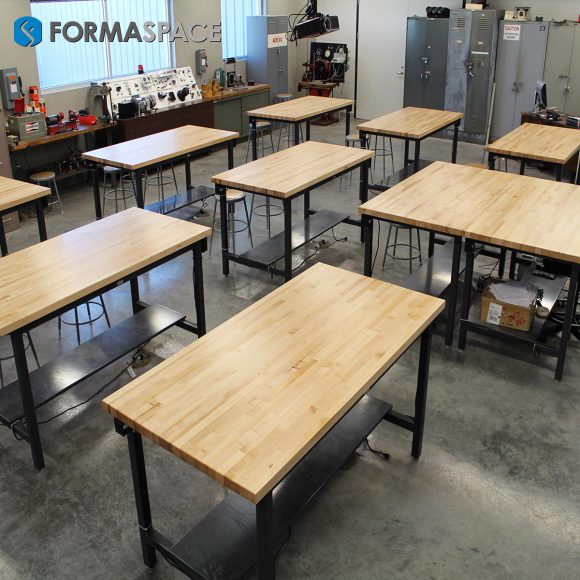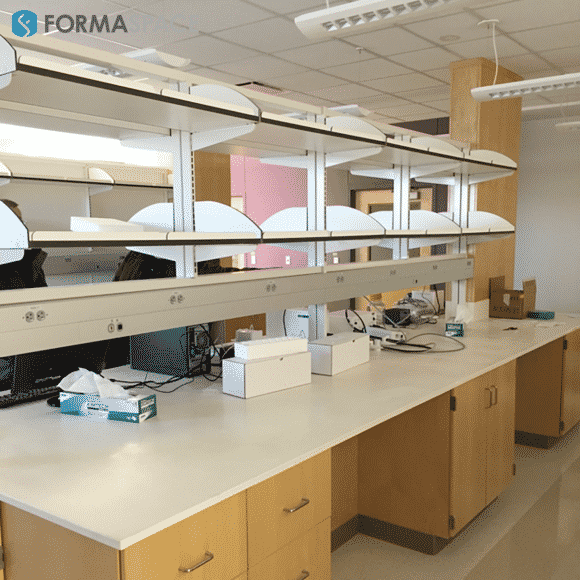Construction projects at educational institutions are proceeding on a case-by-case basis during the coronavirus outbreak. We look at how educational facility managers are making the call on whether to proceed with renovations or new build projects and, if so, how they can maintain safe working conditions on the job site.
The coronavirus outbreak has wreaked havoc on the American economy in countless ways.
Restaurants and bars have shut down across the country, major sports leagues have postponed their games indefinitely, and there are critical shortages of products, ranging from toilet paper to medical devices and protective gear needed by first responders and health care providers.
Under normal circumstances, this would be the time of year when facility managers at educational institutions would be gearing up for the annual “construction season” — in which they try to rush through all their badly needed renovations (or make as much headway as possible on new build construction projects) – while the weather is good and most of the students are away on summer break.
But things aren’t normal this year, not in the least.
Across the country, countless primary, secondary, and university level institutions have closed their doors and sent their students home.
How to Decide if it’s OK to Proceed with Construction Projects (or Not)
But these early school closures present a dilemma for many educational facility managers.
On the one hand, the fact that students are not present on many campuses opens up an opportunity to start the “construction season” earlier this year.
But on the other hand, is it entirely safe to do so?
In other words (with apologies to Shakespeare):
To build or not to build. That is the question.
To get an idea what’s happening on the ground, we spoke with several of our key contacts across the nation.
Some quick disclaimers:
First, please understand that few of the people we spoke to were willing to be quoted directly, instead, they provided us with information on background.
And secondly, the coronavirus outbreak situation changes day to day. Any suggestion made today may seem hopelessly out of date in the months, weeks, or even days to come
Given these circumstances, how would you decide whether to proceed with a construction project or not?
To answer this question, we suggest following a decision-making approach proposed by a senior manager at a major REIT located in the Chicago area.
The approach they are following goes like this…
Look first to federal guidance. At the time of writing this article, the Feds are recommending against construction, but it’s considered guidance only, not a mandatory requirement at this time.
Second, look to your local state and city regulations. At the time of writing, both Illinois and Chicago (for example) consider commercial construction to be an essential activity, so unless that changes, that’s a green light for moving ahead from a state and local regulatory basis.
Third, look to the recommendations of relevant trade unions or trade associations. Again, at the time of writing, the major labor union in Chicago, representing most of the area’s construction workers, is presently in favor of continuing work on projects, as long as suitable precautions are taken.
Of course it’s a tough call. And, at the moment, unless or until specific rules prohibiting construction projects come into effect in your area, you may be able to proceed from a regulatory perspective.
However, it’s crucial to protect your workers, so proceed with caution.
So are Construction Projects Currently Underway at Educational Institutions or not?
The answer is it varies.
That’s according to our informal survey of facility managers at educational institutions across the country.
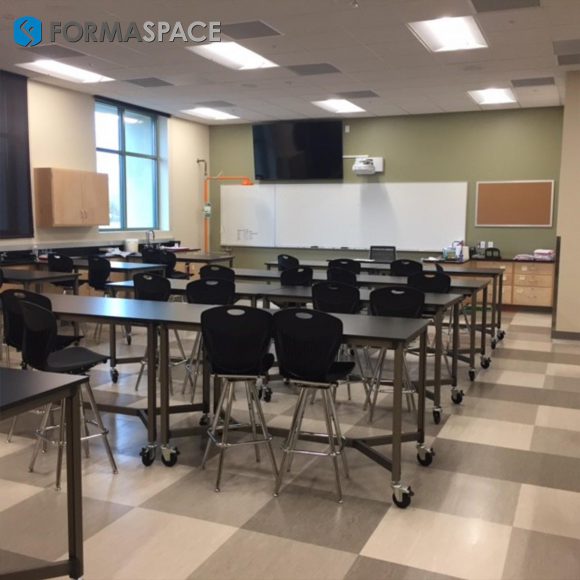
Here are three different scenarios.
Scenario A: Use it or Lose it
Public school systems, in particular, are feeling a lot of pressure to avoid delays to construction projects that have precious funding sources in place.
There’s an expectation that once funds are raised by a school bond issue (and construction projects contracts have been negotiated and signed), any subsequent delays could put the project at risk.
That’s because, in most cases, public education project managers have less flexibility to defer projects paid for by school bonds, compared to similar real estate projects in the commercial sector.
And once a project is canceled or delayed indefinitely — even for what may be considered legitimate force majeure reasons — the institution may be legally compelled to start over with a new bid process from scratch, potentially causing years of delay and significantly increased costs.
For these reasons, many educational institutions are quietly proceeding with construction projects where it’s considered safe to do so.
Scenario B: Teaching Hospitals Focus on Adding Surge Capacity for Patients
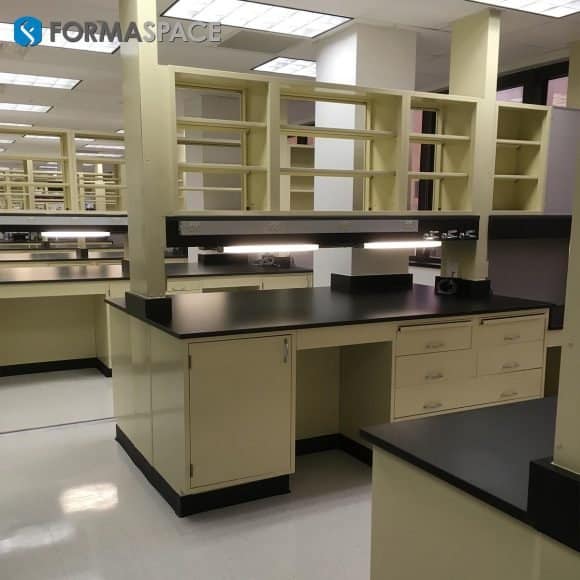
Teaching hospitals are a unique but important category among educational institutions, especially now.
We spoke with a facilities manager at a nationally recognized public teaching hospital to find out whether they are proceeding with construction projects at this time.
The answer is yes. And in many cases, they are actually accelerating existing construction projects, particularly on the hospital side, so they will have more beds available to increase surge capacity, should their patient population grow suddenly due to coronavirus infections.
Our contact pointed out there are also new construction projects underway to convert existing spaces to serve as reserve bed space for COVID-19 patients.
They also pointed out an important observation gleaned from the work undertaken so far.
When this pandemic ends, one of the lessons learned will be to double down on making future facility designs more flexible — so it’s easier to respond more quickly to changing needs, whether due to future pandemic emergencies, natural disasters, or other sudden changes that require an immediate response from a facility planning perspective.
Scenario C: Pressing Education Campuses into Emergency Service
This teaching hospital discussion brings up a point that applies to all educational intuitions.
Educational facility managers need to keep a close eye on local developments in emergency response management and prepare accordingly.
After all, schools, colleges, and universities have often been drafted in the past to serve as public shelters in the event of an major emergency, such as a hurricane, fire outbreak, or earthquake.
So it’s not out of the question that some schools may be pressed into duty as emergency triage centers if the number of COVID-19 patients exceeds the surge capacity of the local healthcare system.
School campuses may also provide assistance in other ways, such as hosting drive through virus screening operations.
Don’t Overlook that “Construction” is a Multi-Faceted Process
Another important reminder that we received from several of our facility management contacts is to stop thinking about “construction projects” as a monolithic task.
Instead, it’s better to think of each construction project as a series of separate but interconnected projects — each of which can be evaluated on a case-by-case basis to make the call if it’s safe to proceed or not.
For example, a significant percentage of the work can be accomplished by individuals working from home, particularly in the early planning stages.
Indeed we heard lots of anecdotal evidence that quite a few planning tasks that are managed from home offices may be running ahead of schedule!
Why?
It seems that people working from their home offices are better able to focus on their project tasks at hand – because they face fewer distractions and interruptions that are part of everyday office life.
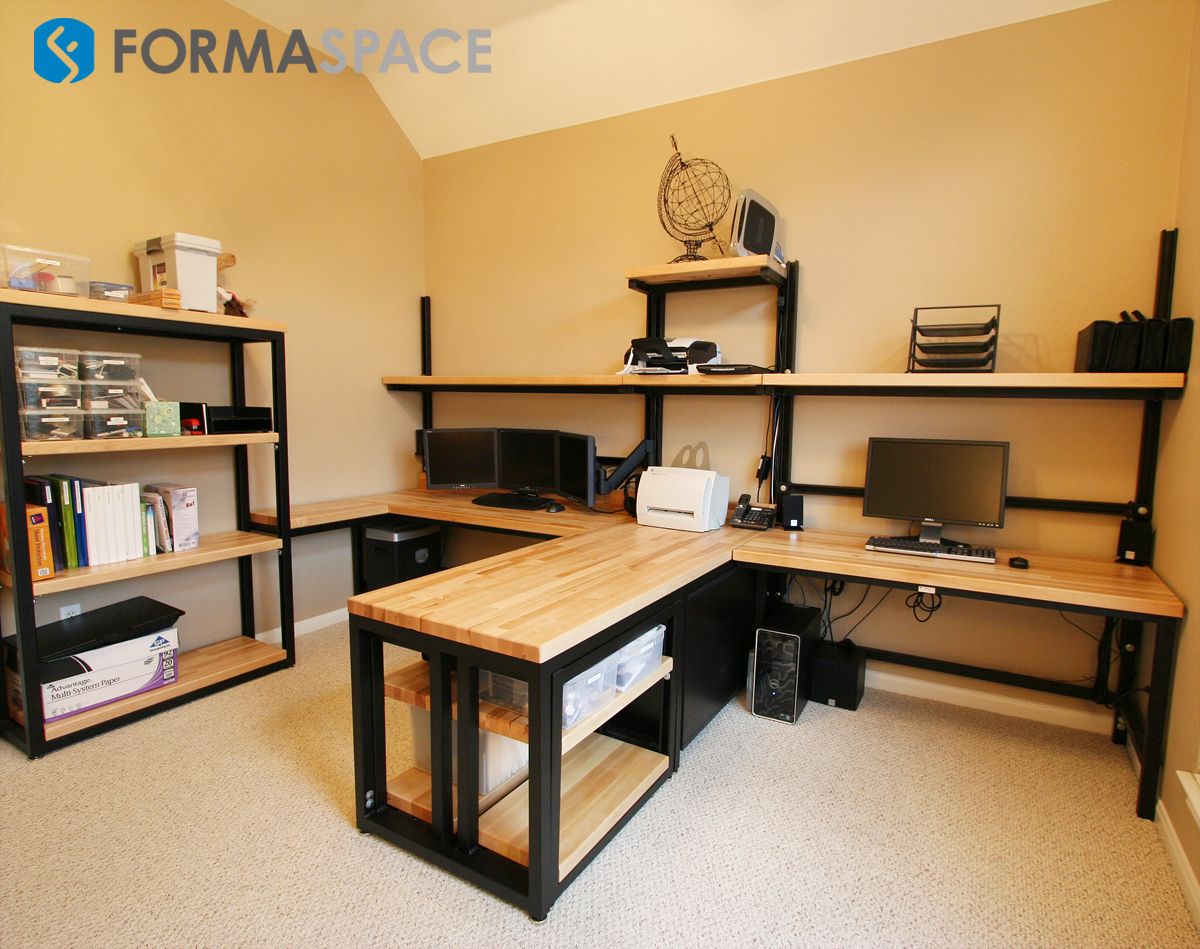
What Precautions Can You Take if You Go Ahead with Construction Projects?
Once again, we need to repeat our caveat that any advice given here may become quickly out of date as circumstances surrounding the coronavirus pandemic change.
Hopefully, in the near future, we will have ready access to tests to determine if someone has an active coronavirus infection. We’re also in need of another type of test that is still in development: an antibody test that can determine if an individual has been exposed to the virus and has generated sufficient antibodies to be resistant to re-infection.
The availability of one or both of these tools would make life much more straightforward for construction project managers who are trying to determine who can safely be on a construction site.
Unfortunately, at the time of this writing, neither of these tests is presently available for day-to-day testing of construction workers.
However, the lack of tests doesn’t mean that you can allow just anyone onto your educational facility campus.
It’s critical to establish a strict identification check-in procedure to make sure that only authorized personnel are allowed on the job site to protect everyone.
From our discussions with our contacts, we’ve found that it’s now common to conduct individual medical screening for workers entering job sites each day, such as checking for elevated body temperatures, coughs, or other evidence of a present illness.
For those construction workers permitted to enter the job site, it’s crucial to provide easy access to hygiene stations where they can wash their hands upon arrival (and multiple times during the day) to help prevent the potential spread of disease.
Construction teams should also regularly sanitize high-touch areas, including tools, door knobs, handles, etc. using an EPA-approved cleaning agent.
It’s also necessary to enforce current social distancing guidelines to keep workers at a safe distance from one another, again to help prevent the spread of the coronavirus if it happens to be present.

New Ways of Working Virtually
These difficult times are also leading to new innovations, such as working virtually when at all possible.
After all, with so many students across the country being sent home to take virtual online classes, why can’t construction teams make better use of virtual technology as well?
So we were intrigued to learn that several of our contacts reported new requests for virtual walk-throughs of construction projects.
Of course, software to create virtual fly-throughs and walk-throughs has been available for decades, popularized by the early versions of 3DS Max and 3DS Viz software by Autodesk.
Tools such as these allow architects to convey complex ideas to clients that might otherwise be difficult for them to grasp by looking at two-dimensional construction drawings.
According to Oguz Ormanci, Managing Director of the Houston-based architectural visualization studio Opus Visual, many AEC clients are surprised by the incredible realism that’s possible to achieve using today’s state-of-the-art rendering systems.
“We have found that using Blender and realtime raytracing, we can build highly realistic virtual reality experiences in a matter of days, to hours, and our clients come away saying this looks more real than the real life!” notes Ormanci.
The COVID-19 pandemic may lead to more uses for these types of visualization tools.
For example, during the bidding process, construction company representatives normally request an on-site tour to look at a facility in person as part of the process for formulating a bid on a project.
However, given today’s circumstances, many potential bidders are requesting either a virtual video tour or a walk-through made directly from the construction plans to evaluate the scope of the project when formulating their bids — without having to visit the site in person.
Other parties who need to sign off on the progress of construction may also benefit from virtual presentations as well, such as finance or insurance representatives who need to verify construction milestones.
However, it might take some time before building inspectors or fire department safety marshals rely on virtual walk-throughs before signing off on a construction permit or issuing an occupancy certificate.
Formaspace can Help
Did you know that Formaspace has helped design, engineer, manufacture, and install projects for more than 350 leading colleges and universities nationwide?
Formaspace was part of the renovation of the landmark Gund Hall at Harvard University’s Graduate School of Design. We custom manufactured new individual studio work areas within the “trays” to replace the original furniture from the building’s inception in 1972 – while keeping the trademark design elements and materials.
Here are some of the well-known institutions that trust Formaspace for their classroom furniture and laboratory facilities:
- Carnegie Mellon University
- Cornell University
- Dartmouth
- Harvard University
- Massachusetts Institute of Technology
- New York University
- Northwestern University
- Princeton University
- Stanford University
- UCLA
- University of California Berkeley
- University of Pennsylvania
- University of Texas
- Yale University
Formaspace designs and builds high-quality furniture right here in our Austin, Texas headquarters. Turn to us when it’s time to renovate your existing classrooms and laboratories, or when you are building all new construction.
Talk to your Formaspace Design Consultant today to see how we can help you make your next project successful.


